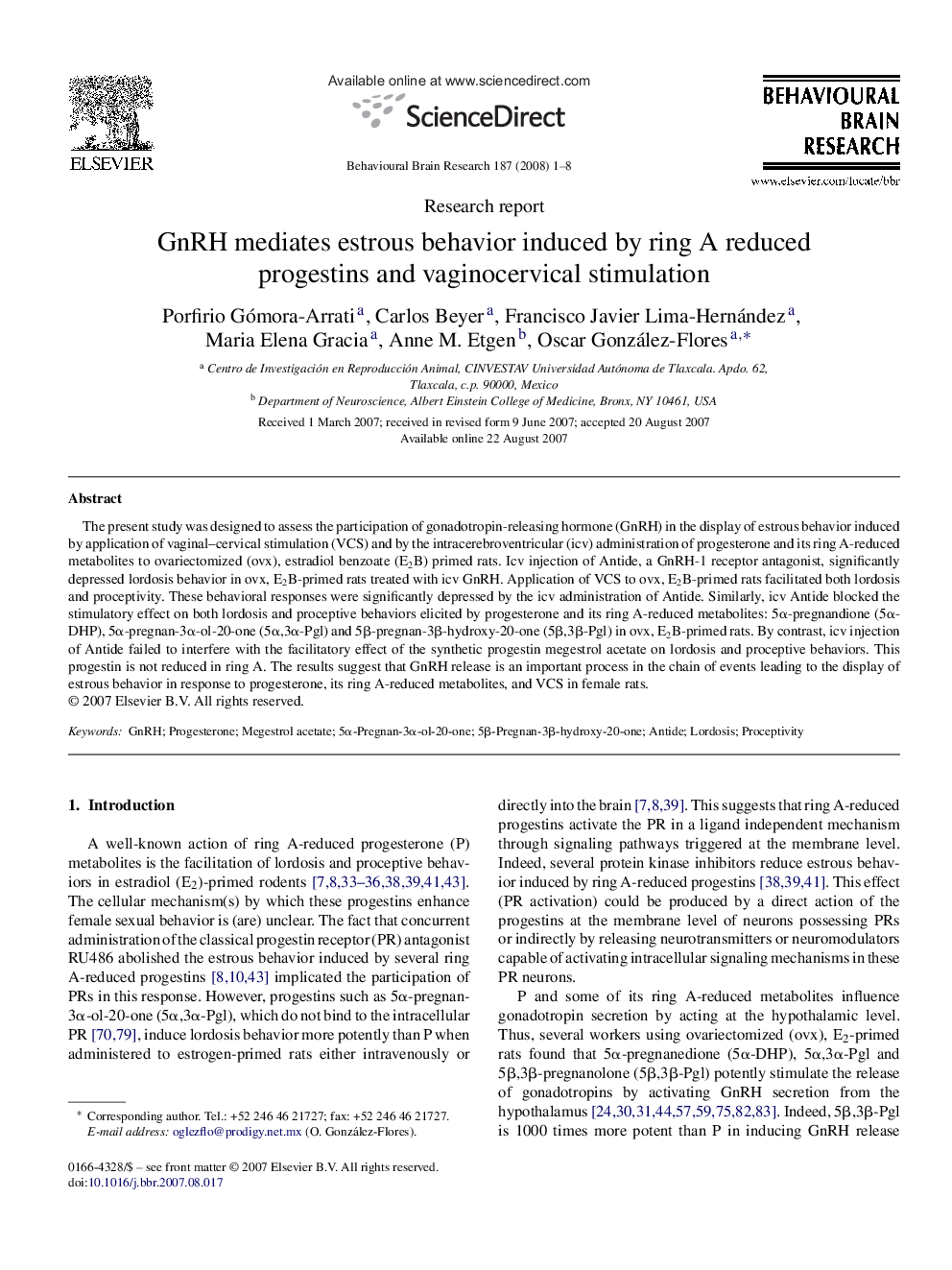| Article ID | Journal | Published Year | Pages | File Type |
|---|---|---|---|---|
| 4315340 | Behavioural Brain Research | 2008 | 8 Pages |
The present study was designed to assess the participation of gonadotropin-releasing hormone (GnRH) in the display of estrous behavior induced by application of vaginal–cervical stimulation (VCS) and by the intracerebroventricular (icv) administration of progesterone and its ring A-reduced metabolites to ovariectomized (ovx), estradiol benzoate (E2B) primed rats. Icv injection of Antide, a GnRH-1 receptor antagonist, significantly depressed lordosis behavior in ovx, E2B-primed rats treated with icv GnRH. Application of VCS to ovx, E2B-primed rats facilitated both lordosis and proceptivity. These behavioral responses were significantly depressed by the icv administration of Antide. Similarly, icv Antide blocked the stimulatory effect on both lordosis and proceptive behaviors elicited by progesterone and its ring A-reduced metabolites: 5α-pregnandione (5α-DHP), 5α-pregnan-3α-ol-20-one (5α,3α-Pgl) and 5β-pregnan-3β-hydroxy-20-one (5β,3β-Pgl) in ovx, E2B-primed rats. By contrast, icv injection of Antide failed to interfere with the facilitatory effect of the synthetic progestin megestrol acetate on lordosis and proceptive behaviors. This progestin is not reduced in ring A. The results suggest that GnRH release is an important process in the chain of events leading to the display of estrous behavior in response to progesterone, its ring A-reduced metabolites, and VCS in female rats.
